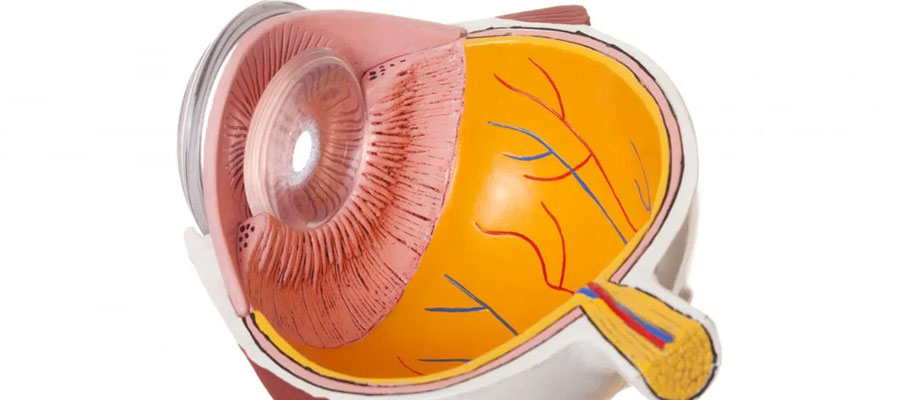What Is Central Serous Retinopathy?

Central Serous Retinopathy; The thin nerve layer that surrounds the inner surface of the eye like a sheet and creates visual signals is called the retina.
Central serous retinopathy (CSR) is a disease characterized by detachment of the retina from its attachment due to the accumulation of fluid under the retina. Since the source of the fluid is the choroid, which is the vascular layer under the retina, it is also called central serous choroidoretinopathy.
If this detachment occurs in the visual center macula, vision loss occurs. If the fluid stays under the retina for a long time, permanent damage to the visual cells may occur.
In whom does central serous retinopathy occur and why?
This disease is most common between the ages of 30-50. Rarely, it can appear at younger or older ages. Although the cause is unknown, its incidence in men is 6 times higher than in women.
It is known that stress plays a role in the development of CSR. It is more common in people who feel stressed and have stressful occupations. It is thought that the increase in blood levels of cortisol, which is one of the stress hormones, causes the imbalance of the choroidal blood flow, thus causing fluid accumulation under the retina.
The use of cortisone-containing drugs in allergies, rheumatism and some other diseases may lead to the development of CSR. These drugs may cause worsening of the disease in people with existing CSR.
Since hormone levels change during pregnancy, CSR may develop, especially in the last trimester of pregnancy.
What are the symptoms in central serous retinopathy?
The most common symptom is blurred vision. Apart from this, complaints such as seeing colors pale, seeing objects crooked or different in size may occur. There may be symptoms such as difficulty seeing fine details and recognizing faces.
Sometimes the involvement is outside the visual center and does not give any symptoms. Although CSR usually affects only one eye, rarely both eyes may be involved.
How is the diagnosis made in central serous retinopathy?
After the routine eye examination, the pupils are dilated with drops and the back of the eye (macula) is examined with special lenses. If CSR is suspected, the diagnosis is confirmed by eye angiography and optical coherence tomography (OCT-eye tomography), which the ophthalmologist deems necessary.
In eye angiography, a special dye is injected into the arm vessel and the leaking area in the retina is determined. Response to treatment and follow-up of the disease is also done by OCT examination.

How is central serous retinopathy treated?
In most cases, central serous retinopathy resolves spontaneously within 3-4 months without the need for any treatment. In cases that do not recover within this period and have vision loss, treatment is required.
First of all, if there is cortisone use, it is recommended to quit the cortisone by reducing it, if possible, in consultation with the doctor of the relevant department. It is recommended to regulate the lifestyle, sleep regularly and avoid stress.
There are several different options for treatment. These are oral medications, laser therapy and photodynamic therapy, also called cold laser.
In classical laser treatment, the leaking area is closed by applying laser. In a few months, the fluid will go away on its own. If the leakage area is very close to the center or in more than one area, laser is inconvenient because it can also burn the cells where it is applied. Therefore, it is not preferred much nowadays.
In photodynamic therapy (cold laser), a special drug is administered through a vein in the patient’s arm and this drug is expected to reach the eye. When the drug reaches the eye, cold laser is applied to the leaky veins and they are sealed without burning. Today, it is a very effective and satisfactory treatment. Photodynamic therapy also reduces the risk of recurrence.
The treatment to be chosen will be determined by your doctor according to the duration of the disease, the location and size of the leaky area. Early diagnosis is very important in CSR. In most cases, the disease resolves with only observation, and permanent vision loss can be prevented with appropriate treatment.






